This article was medically reviewed by Janice Litza, MD. Dr. Litza is a board certified Family Medicine Physician in Wisconsin. She is a practicing Physician and taught as a Clinical Professor for 13 years, after receiving her MD from the University of Wisconsin-Madison School of Medicine and Public Health in 1998.
There are 13 references cited in this article, which can be found at the bottom of the page.
wikiHow marks an article as reader-approved once it receives enough positive feedback. In this case, 84% of readers who voted found the article helpful, earning it our reader-approved status.
This article has been viewed 152,465 times.
Studies show that the Epley maneuver is effective for relieving dizziness caused by benign paroxysmal positional vertigo (BPPV).[1] BPPV is a condition where pieces of calcium break free and float around in your inner ear, causing you to feel dizzy and possibly nauseous. Experts say the Epley maneuver may move these pieces out of your inner ear, which can help your symptoms go away.[2] Ask your healthcare provider to perform the Epley maneuver on you. If your doctor says it's okay, you may be able to do it at home if your symptoms come back.
Steps
Having the Maneuver Done by a Doctor
-
1Schedule an appointment with your doctor if this is your first Epley maneuver.[3] If you are experiencing vertigo and have recently been diagnosed with BPPV, you should to go to a doctor who will perform the Epley maneuver to reposition your inner ear crystals. A doctor or therapist is the only person who should do this maneuver if this is your first time experiencing BPPV. However, they will teach you how to perform it on yourself, just in case your symptoms return in the future.
-
2Understand why it is important to have the maneuver done by a doctor before trying it yourself. While you can do the maneuver at home (covered in Method Two of this article), going through the process with a doctor first will help you understand what it feels like to have the procedure done correctly. Trying at home without any context can actual further displace your ear crystals and make your vertigo worse!
- If you already know what this procedure feels like when done correctly, you can move to method two to refresh your memory on how to perform it.
Advertisement -
3Be prepared to feel vertigo in the first step of the maneuver. The doctor will seat you on the edge of a table or bed, with your head facing forward. Your doctor will then place one hand on each side of your head and will quickly move your head 45 degrees to the right. She will then immediately lie you down on the table so that your head is still in the 45 degree angle to the right. Your doctor will ask you to remain in this position for 30 seconds.[4]
- Your head will be lying off the examination table or, if you have a pillow behind your back, your head will be on the table. Whatever level your head is resting at, the goal is to have your head lower than the rest of your body when you lie down.
-
4Be ready for the doctor to rotate your head again. While you remain in the position she has just placed you in, she will reposition herself and then quickly rotate your head 90 degrees to the opposite side (which means that she will turn your head so that it is facing to the left).[5]
- You should pay attention to any feelings of vertigo that you have. These will most likely stop after 30 seconds in this new position.
-
5Roll onto your side. Next the doctor will ask you to roll onto your left side, while she rapidly rotates your head to the right (your nose will now be angled at the floor). To visualize what you will be doing, imagine that you are lying on your right side on your bed, but your face is pointing down into your pillow. You will hold this position for 30 seconds.[6]
- Double check the rotation side and nose direction. Note that if your doctor determines the problem is on the right, they will rotate your body and head to the left, and vice versa.
-
6Return to a sitting position.[7] After 30 seconds, your doctor will quickly lift you into a sitting position. You should not feel any vertigo at this time; if you do, this maneuver can be repeated until you are no longer having vertigo. Sometimes it takes more than one maneuver to get all of your inner ear crystals back into their proper places.
- Note that, for BPPV on the LEFT side, the same procedure should be performed with the sides reversed.
-
7Allow yourself to heal after the maneuver is performed.[8] After your appointment with the doctor, you might be given a soft neck brace that you will most likely be instructed to wear for the rest of the day. Your doctor will also give you instructions on how to sleep and move around so that you do not experience vertigo again. These instructions are covered in Part 3 of this article.
Doing the Maneuver Yourself
-
1Know when to perform the maneuver at home. You should only perform the maneuver at home if your doctor has clearly diagnosed you with BPPV. If there is a chance that your vertigo is caused by some other condition, the maneuver should only be done by a doctor. The maneuver you will do at home is almost the same as the one the doctor performed, only there will be some slight adjustments.
- You should not do the Epley maneuver at home if you have had a recent neck injury, if you have a history of stroke, or if you have a limited range of your neck motion.
-
2Put your pillow in the right position. Place a pillow on your bed so that when you lie down, it will be behind your back and your head will be lower than the rest of your body. Sit on the bed and turn your head 45 degrees to the right.
- If possible ask someone to be there while you do this maneuver. It will be very helpful to have someone keep time for you, as you will have to remain in each position for 30 seconds.
-
3Lie down in a swift motion. With your head still rotated 45 degrees to the left, quickly lie back so that the pillow is under your shoulders and your head is lower than your shoulders. Your head should be resting on the bed. Keep your head at the 45 degree angle facing the right. Wait for 30 seconds.[9]
-
4Move your head 90 degrees to the left.[10] While you are lying down, quickly turn your head 90 degrees to the opposite side (in this case the left). Do not lift your head when you turn it; if you do, you may have to start the maneuver over. Stay in this position for 30 seconds again.
-
5Shift your whole body (including your head) to the left. From your position where you are facing the left, move your body so you that you are lying on your right side. Your head should be facing down so that your nose is touching the bed. Keep in mind that you head will be turned more than your body.[11]
-
6Hold the last position and then sit up. Wait 30 seconds in the last position, lying on your right side with your head facing down so your nose touches the bed. Once the 30 seconds is up, sit up. You can repeat the self-maneuver 3 to 4 times a day until you do not feel any sensations of vertigo. Note that, if you have BPPV on the left side, do the same exercise but with the sides reversed.[12]
-
7Opt to perform the maneuver just before bed.[13] Especially if it is your first time performing the Epley maneuver on yourself, it is ideal to do it right before bed. This way, if something goes wrong and you inadvertently trigger more dizziness or vertigo, you can sleep it off (as opposed to having it negatively impact your day).
- Once you have practiced the maneuver and feel comfortable performing it on yourself, feel free to do it at any time during the day.
Recovering After the Maneuver
-
1Wait for 10 minutes before leaving the doctor's office.[14] It is important to wait so that the debris in your inner ear can settle before you inadvertently shake it up again. This helps to avoid any rebound symptoms of vertigo right after leaving the doctor's office (or right after performing the maneuver on yourself).
- After about 10 minutes, the debris should be settled and you are safe to proceed with your day as normal.
-
2Wear a soft collar for the rest of the day. After you get the maneuver performed on you by a doctor, you will be given a soft collar (also known as a soft neck brace) that you will be asked to wear for the rest of the day. The collar will help to control your head movements so that you don’t accidentally move your head in a way that makes your inner ear crystals get out of place again.[15]
-
3
-
4Keep your head as vertical as possible during the day. This means keeping your neck as straight as possible, with your head facing forward. Avoid doing things like going to the dentist or hairdresser, where they tilt your head backwards. You should also avoid exercises where your head moves around a lot. You should not tilt your head back more than 30 degrees.[18]
- When you shower, position yourself so that you are directly under the shower head so that you don’t have to tilt your head back.
- If you are a man who needs to shave, bend your body forward rather than tilting your head to shave.
- Avoid any other positions that are known to trigger your BPPV for at least one week after the Epley maneuver has been performed.[19]
-
5Test the results.[20] After you have waited for a full week avoiding symptoms that are known to provoke your BPPV, try an experiment and see if you can cause yourself to experience vertigo again (by assuming one of the positions that may previously have triggered it). If the maneuver was successful, you should not be able to trigger the vertigo in yourself at this time. It may return again down the road, but the Epley maneuver is highly successful and serves as a temporary cure for BPPV in about 90% of people.
Expert Q&A
-
QuestionDo I have to wear the neck brace?
 Janice Litza, MDDr. Litza is a board certified Family Medicine Physician in Wisconsin. She is a practicing Physician and taught as a Clinical Professor for 13 years, after receiving her MD from the University of Wisconsin-Madison School of Medicine and Public Health in 1998.
Janice Litza, MDDr. Litza is a board certified Family Medicine Physician in Wisconsin. She is a practicing Physician and taught as a Clinical Professor for 13 years, after receiving her MD from the University of Wisconsin-Madison School of Medicine and Public Health in 1998.
Board Certified Family Medicine Physician Wearing a neck brace might be helpful initially to remind you to keep your head in proper position, but it is not an absolute requirement.
Wearing a neck brace might be helpful initially to remind you to keep your head in proper position, but it is not an absolute requirement. -
QuestionIs hearing loss a symptoms of BPPV?
 Janice Litza, MDDr. Litza is a board certified Family Medicine Physician in Wisconsin. She is a practicing Physician and taught as a Clinical Professor for 13 years, after receiving her MD from the University of Wisconsin-Madison School of Medicine and Public Health in 1998.
Janice Litza, MDDr. Litza is a board certified Family Medicine Physician in Wisconsin. She is a practicing Physician and taught as a Clinical Professor for 13 years, after receiving her MD from the University of Wisconsin-Madison School of Medicine and Public Health in 1998.
Board Certified Family Medicine Physician No, any new loss of hearing with dizziness needs to be evaluated for other problems that might be causing vertigo.
No, any new loss of hearing with dizziness needs to be evaluated for other problems that might be causing vertigo.
Warnings
- Be gentle with yourself—do not move so quickly that you hurt your neck.⧼thumbs_response⧽
- Stop doing the procedure if you feel headache, changes in vision, numbness or weakness.⧼thumbs_response⧽
References
- ↑ https://www.ncbi.nlm.nih.gov/pmc/articles/PMC4043960/
- ↑ https://medlineplus.gov/ency/article/007662.htm
- ↑ http://www.mayoclinic.org/diseases-conditions/vertigo/basics/treatment/con-20028216
- ↑ Von Brevern M, Seelig T, Radtke A, Tiel-Wilck K, Neuhauser H, Lempert T. Short-term efficacy of Epley’s manoeuvre: a double-blind randomized trial. J Neurol Neurosurg Psychiatry. 2006; 77:980.
- ↑ http://www.merckmanuals.com/home/ear,-nose,-and-throat-disorders/inner-ear-disorders/benign-paroxysmal-positional-vertigo-(benign-positional-vertigo)
- ↑ Seo T, Miyamoto A, Saka N, Shimano K, Sakagami M. Immediate efficacy of the canalith repositioning procedure for the treatment of benign paroxysmal positional vertigo. Otol Neurotol 2007; 28: 917.
- ↑ https://www.activator.com/wp-content/uploads/Home%20Epley%20Handouts.pdf
- ↑ https://www.urmc.rochester.edu/encyclopedia/content.aspx?contenttypeid=135&contentid=405
- ↑ Von Brevern M, Seelig T, Radtke A, Tiel-Wilck K, Neuhauser H, Lempert T. Short-term efficacy of Epley’s manoeuvre: a double-blind randomized trial. J Neurol Neurosurg Psychiatry. 2006; 77:980.
- ↑ https://www.urmc.rochester.edu/encyclopedia/content.aspx?contenttypeid=135&contentid=405
- ↑ Seo T, Miyamoto A, Saka N, Shimano K, Sakagami M. Immediate efficacy of the canalith repositioning procedure for the treatment of benign paroxysmal positional vertigo. Otol Neurotol 2007; 28: 917.
- ↑ https://www.hopkinsmedicine.org/health/treatment-tests-and-therapies/home-epley-maneuver
- ↑ https://www.activator.com/wp-content/uploads/Home%20Epley%20Handouts.pdf
- ↑ https://www.activator.com/wp-content/uploads/Home%20Epley%20Handouts.pdf
- ↑ Snow, J. B., Wackym, P. A., & Ballenger, J. J. (2009). Ballenger's otorhinolaryngology: Head and neck surgery. Shelton, Conn: People's Medical Pub. House/B C Decker.
- ↑ https://www.hopkinsmedicine.org/health/treatment-tests-and-therapies/home-epley-maneuver
- ↑ http://www.dizziness-and-balance.com/disorders/bppv/bppv.html
- ↑ Tarulli, A. (2011). Neurology: A clinician's approach. Cambridge: Cambridge University Press.
- ↑ https://www.uhs.nhs.uk/Media/UHS-website-2019/Patientinformation/Audiology/Home-Epley-manoeuvre-to-treat-BPPV-left-ear-2782-PIL.pdf
- ↑ https://www.activator.com/wp-content/uploads/Home%20Epley%20Handouts.pdf
- ↑ http://www.merckmanuals.com/home/ear,-nose,-and-throat-disorders/inner-ear-disorders/benign-paroxysmal-positional-vertigo-(benign-positional-vertigo)
About This Article
Before performing the Epley maneuver yourself, see your doctor so you can learn how to do it correctly. To do the maneuver at home, first position your pillow so it’s under your shoulders, with your head resting directly on the bed. As you lie down, keep your head tilted at 45 degrees and face to the right. After 30 seconds, rotate your head 90 degrees to the left, then wait another 30 seconds. Next, turn your whole body so you’re lying on your right side with your nose touching the bed. Wait 30 seconds, then carefully sit up with your head still in the same position. For more tips from our Medical co-author, including how to recover after the maneuver, read on!

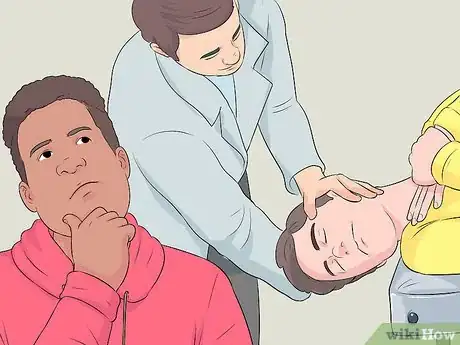





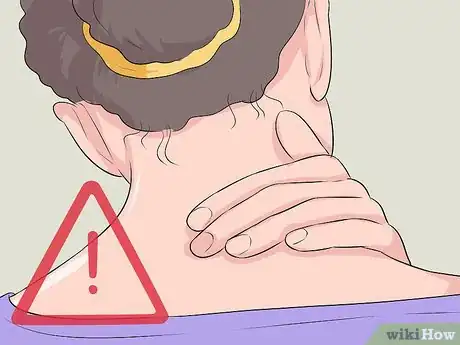
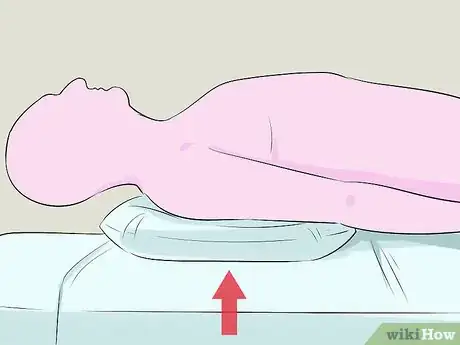

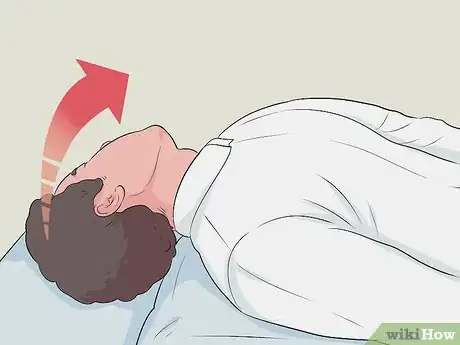

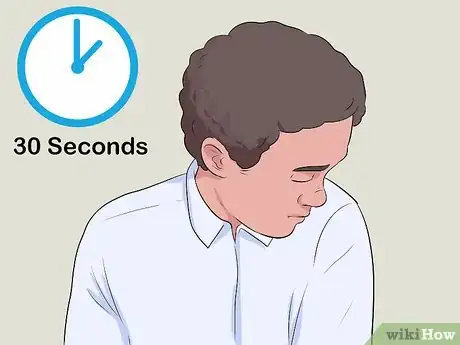
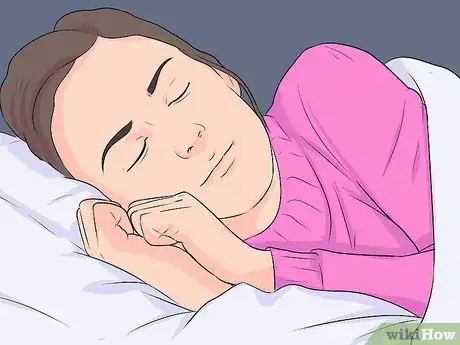




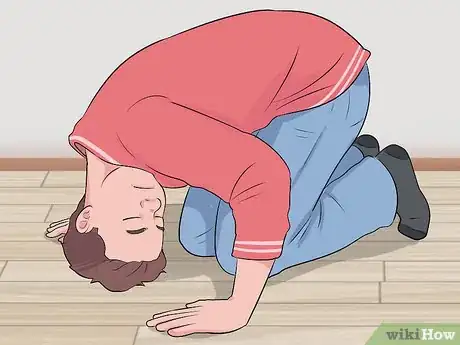
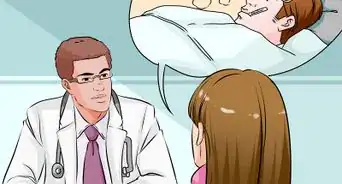







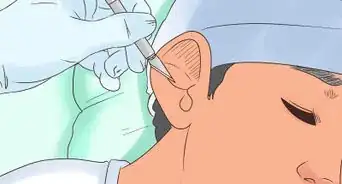
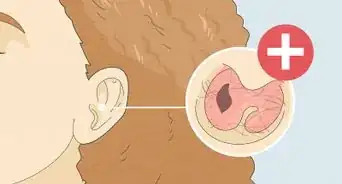













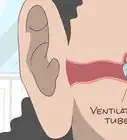
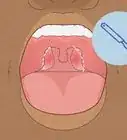




































Medical Disclaimer
The content of this article is not intended to be a substitute for professional medical advice, examination, diagnosis, or treatment. You should always contact your doctor or other qualified healthcare professional before starting, changing, or stopping any kind of health treatment.
Read More...